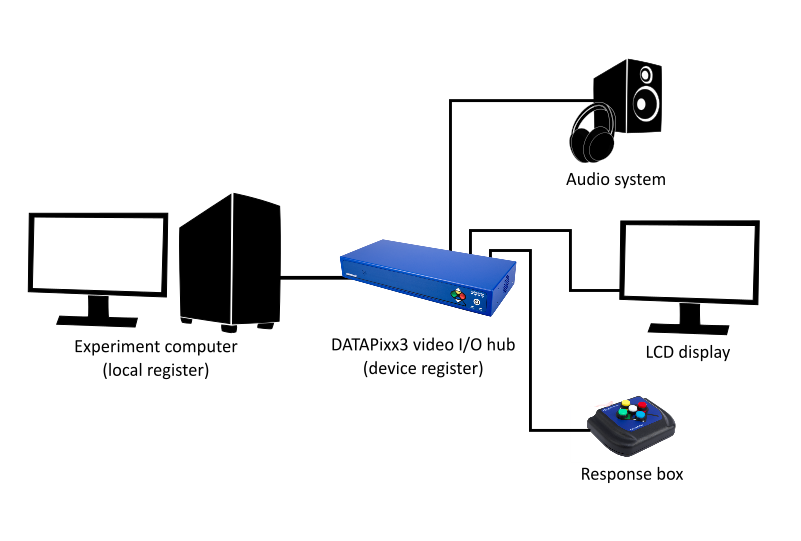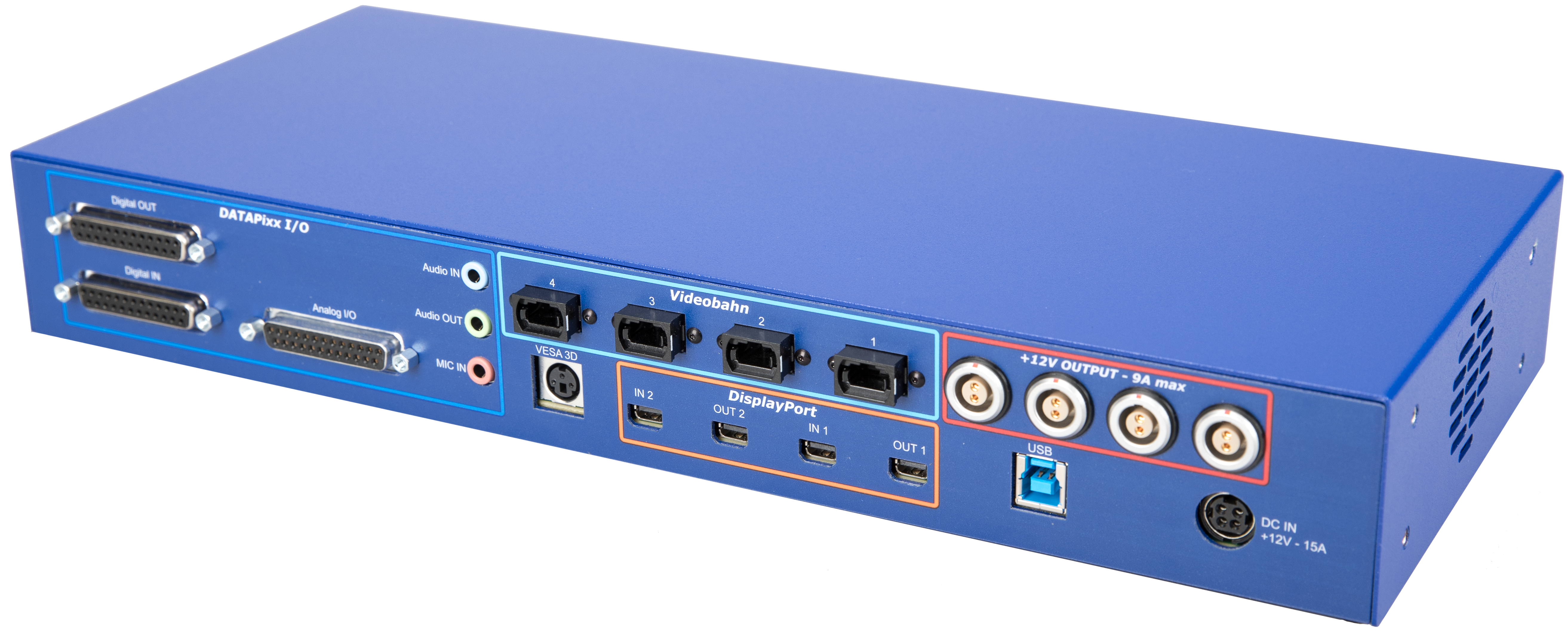At the core of VPixx’s research tools is the DATAPixx video I/O hub-- the classic VPixx ‘blue box’. This comprehensive acquisition system can send and record digital, analog and audio signals, and record eye tracking data from our TRACKPixx3. It sits in the video pipeline between your PC and the display, and acts as a single interface through which all signals can run:

The DATAPixx be purchased separately, or used in conjunction with any of our acquisition or display hardware. Typically it is a standalone unit, but on our CRT replacement screens, the VIEWPixx and VIEWPixx /3D, the hub is built directly into the back of the monitor.

The advantage to a single data acquisition hub is fourfold:
-
Modularity: Components can be added to or removed from the system without interfering with existing hardware
-
Synchronization: A single nanosecond precise hardware clock means that recorded data and outgoing signals are aligned automatically
-
Speed: By managing signal control on our hardware, which is streamlined and optimized for this purpose, we avoid the software delays and variability associated with driving equipment directly from your computer. The hub operates independently, so there is no concern about PC operations affecting signal timing.
-
Simplicity: One piece of hardware and one interface for managing your I/O means less time managing cables and hardware, and more time doing leading-edge research
The rest of this series focuses on how we interact with the DATAPixx with our MATLAB and Python software tools.
Register writes and updates allow us to execute multiple system changes simultaneously, optionally locked to specific events in the video signal. Markers allow us to strategically save hardware timing with nanosecond precision. Schedules allow us to configure the hardware memory to support specific kinds of signal output and acquisition.
Understanding these concepts and the logic behind our hardware architecture will allow you to utilize the DATAPixx’s full potential for comprehensive experiment control.
Of course, our team of trained staff scientists is here to help, too. If you have any questions, don’t hesitate to contact scientist@vpixx.com for a personalized consultation.